By Sr. Orianne Pietra René Dyck and Sr. Allison Regina Gliot
The anime industry within Japan has long been a powerhouse. Now, anime is booming in international popularity. Currently, the largest multi-billion-dollar market for anime outside of Japan is the United States. With this influx in available anime, Christians may be left wondering how to navigate this popular landscape of stories. Questions like: What even is anime? Is anime spiritually dangerous? How can I engage with friends or kids who love anime when I have concerns about it? I just don’t get it? may come to mind.
As Christians, we are called to navigate all things through the wisdom and goodness of Christ and his Church. When discerning whether to watch anime, we must examine its reality through the lens of Church teaching with Christ always at the center of our discernment. Understanding the reality of anime can be confusing, and so can understanding how Church teaching applies to Christian discernment with regards to storytelling. To help you discern your anime engagement with greater confidence, we have compiled a Q&A-style guide to some common questions about discerning anime:
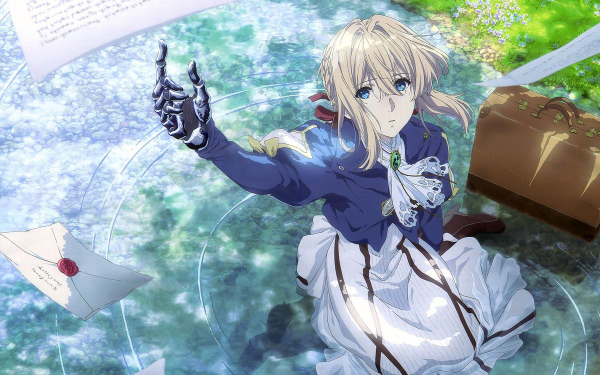
Violet Evergarden © 2018 Kyoto Animation. All Rights Reserved.
What is anime?
In French, “animé” means “animated.” The Japanese term ‘anime’ borrows from French and English “animé” and “animation.” “Anime” refers to a large variety of Japanese-style animation made for the screen. Anime can take many forms, from feature-length movies to multi-season TV shows to short films.
Anime, therefore, is a category of art in storytelling. But it isn’t a genre.
Note: “Manga” is the book form of anime, similar to Western graphic novels.
Another note: by “Western” we don’t mean Westerns as a film/TV genre but are referring to Western (such as American) culture as opposed to Eastern (such as Japanese) culture.
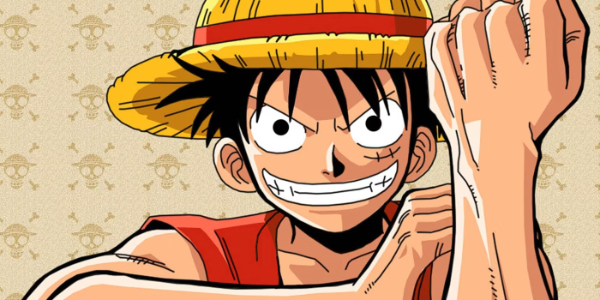
One Piece © 1999 Toei Animation. All Rights Reserved.
Is anime a genre? It’s animated, so is it for kids?
In the West, we tend to say “It’s animation” to denote that a film belongs to the children’s genre. However, even in Western media this isn’t an accurate characterization of animation, and this mischaracterization can lead to misguided decisions of what to watch with your family. For example, South Park is a Western animated TV show that is made specifically for adults and is not kid-friendly. Likewise, describing a film as “live” does not inherently suggest whether a film is for families or not. Mary Poppins is a live film, and so is Hacksaw Ridge. Just as any genre of film (kid, fantasy, rom-com, action, war, etc) can be a “live” film, so can any genre of film be an “anime” film.
Anime is an art form, not a genre.
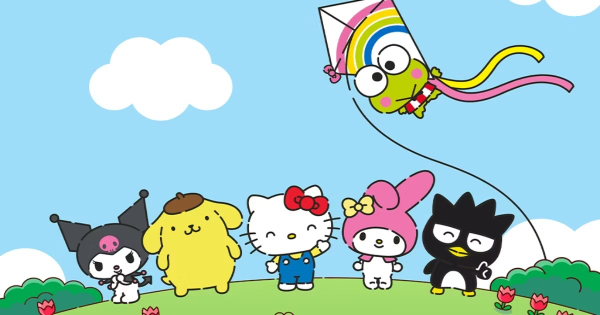
Hello Kitty & Friends - "Let's Learn Together © 2017 Liberty Animation Studio. All Rights Reserved.
Is anime evil?
Not inherently.
Anime is a style of art, and art is what we would call ‘neutral.’ While the ability to create art is a good gift from the Lord (see Pope JPII’s Letter to Artists), whether the art produced is good or bad, safe or dangerous, inspiring or degrading, depends on how artists and storytellers use their gift.
Art and storytelling have a special ability to transcend communication barriers and strike the heart. This is why we seek to receive and to share stories that communicate truth, goodness, and beauty.
Truth, goodness, and beauty are often called “transcendentals,” meaning they go beyond the range or limits of our fallen earthly realities. The Greek philosophers were captivated by these three transcendentals, and Christian thinkers such as St. Thomas Aquinas and C.S Lewis have pointed to their presence in the Scriptures, the Liturgy, and our personal relationships with the Lord. These transcendentals of truth, goodness, and beauty are things that can cut through the murkiness of the ignorance, confusion, dissonance, and disintegration of human society and the fallen human person to guide us closer to their source: God. This is why to recognize and nourish truth, goodness, and beauty; we must always go back to their source (for more on this, check out this video by Fr. Mike Schmitz).
Some anime brings an astounding depth of beauty, goodness, and truth. Many of the stories told in this art form seek to uncover beauty in the midst of brokenness. On the other hand, some anime presents distorted and unhealthy things as desirable. As with any type of media, viewers must discern which works reveal, point to, or inspire what is true, good, and beautiful, and walk away from what does not.

Fullmetal Alchemist: Brotherhood © 2009 Crunchyroll. All Rights Reserved.
Is anime Christian?
In Japan, Christians (all denominations combined) make up 1.5% of the population. Catholic Christians specifically make up 0.34% of the population. It stands to reason then that most anime stories are not being created or told from a specifically Christian perspective. However, as Christians, we recognize that the Lord sows seeds of his Word in the hearts of all men and women (cf. Ad Gentes, no. 11), so that his children from every corner of the world might recognize him and receive the Gospel when they encounter it.
Art and storytelling from philosophies or traditions that have not yet encountered Christ, can often contain the glimmer of those seeds. When we find what is true, good, and beautiful in these stories, we celebrate and affirm these seeds of the Word, which may “reflect a ray of that truth which enlightens all men” (Nostra Aetate, no. 2). However, we do not engage blindly with stories that may contain these seeds if they are also sowing plenty of the opposite kind. This is why discernment when engaging with any kind of media is so important.
Just like with secular Western movies/media, anime often tells beautiful stories with deeply Christian themes. And, just like with Western movies/media, anime can also tell degrading, sinful, or disturbing stories. The viewer must use their conscience and common sense to prayerfully discern what is good vs. what is degrading to watch.
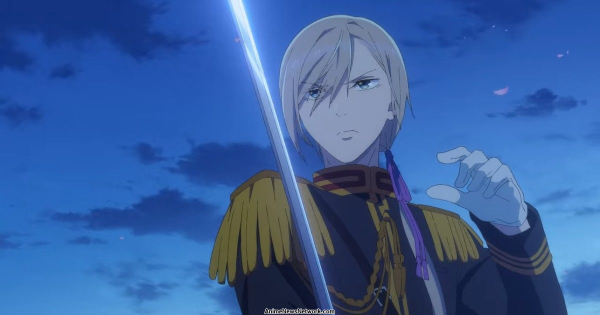
My Happy Marriage © 2023 Netflix. All Rights Reserved.
Does anime have explicit violent or sexual content?
As with live films in the West, anime may range from cute G-rated shows meant to teach kids about sharing, kindness, and the alphabet, to R-rated shows depicting graphic violence or sexually explicit content. As with Western media, always check an anime’s ratings to understand the age of intended viewership, what themes it deals with, and see any warnings for explicit content.
When discerning your own limits for any type of content, whether it is labeled ‘explicit’ by the industry or not, always ensure that your goal is to keep your heart entirely open to Christ. This means striving to nourish your soul with what is true, good, and beautiful (Phil 4:8) and to avoid near occasions of sin.
What might this discernment look like in real life?
If you can handle a bit more violence in a film than your grandmother can without it negatively affecting your thought patterns, emotional state, or prayer life, and you know that the violence portrayed in a film was not intended to convey a message of degradation or flippancy toward human dignity, then it may well be alright for you to watch something that your grandmother would find too difficult. On the other hand, if, for example, you know that you are more sensitive than average to sexual references in film which, while they may not affect your friends, they could trigger in you a struggle with judgement, lust, masturbation, self-comparison, self-degradation, sexualization of others, fascination with sin, distraction from Christ, etc. If that is the case, then it would be prudent to step away from stories that contain these triggers.
Regardless of one’s personal sensitivities, there will always be certain content that is simply not within the realm of God and his goodness to create or consume. In saying no to consuming these types of media, whether they originate from the East or the West, we have an opportunity to say yes to Christ in his goodness, humility, and faithfulness. We also say yes to upholding the beauty, goodness, and dignity of the human persons behind these media productions – and of ourselves.
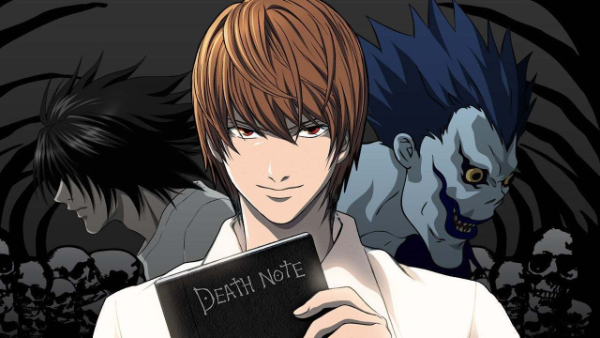
Death Note. © 2006 Nippon Television Network (NTV). All Rights Reserved.
Is anime demonic?
Most anime comes from a secular Japanese worldview. Although 65% of Japan identifies as either agnostic or atheist, the history of faith, philosophy, art, and storytelling in Japan has naturally led to noticeable Shinto and Buddhist influences in secular aesthetics, philosophy, and terminology. This means that some spiritual terms, including words like “spirits” and “demons” aren’t always used the same way as in cultures whose languages are more heavily influenced by Christianity. For example, in some stories the word “demon” may refer to what stories in the West would term a “sprite,” or some other mischievous mythical creature. For example, Studio Ghibli’s famous Howl’s Moving Castle has a character named Calcifer who is termed “a fire demon” despite not being evil or a fallen angel, but rather more like a mischievous trickster with a good heart. However, this is not always the case. Sometimes the definitions of these terms can overlap, and “demon” in a show may be referring to what Christians would indeed call a demon. This linguistic inconsistency can lead to a lot of confusion in discerning what is safe to watch.
As Christians, we know that fantasy magic and folklore can allow our imagination to help us understand truths about the realities around us and to encounter God more deeply, as in the fantasy world of Narnia (C.S. Lewis) and Middle-Earth (Tolkien). We also know that true black magic, or anything that encourages evil or celebrates what Christians call demons, is to be rejected as that which rejects God. So, when terminologies and philosophies in storytelling differ, how can we navigate this question?
Consider how terms and concepts are understood in the context of the story:
Does “demon” parallel Western ideas of faeries, mischievous sprites, or trickster folklore creatures? Or, in the context of the story, does “demon” refer to an evil spirit, more like what Christians call “demons”?
If a story deals with evil in any form, is that evil being depicted as the horror that it is and condemned? Is it something that the protagonists are fighting against or trying to reject or expel (even if they sometimes face temptation or make mistakes along the way)? Or is evil being rationalized, romanticized, fostered, or encouraged?
These questions are helpful in safely identifying if something is good, true, and beautiful, and whether it is safe to watch. Reading or watching reviews by faithful Christians may also help to determine the scope of a particular story.
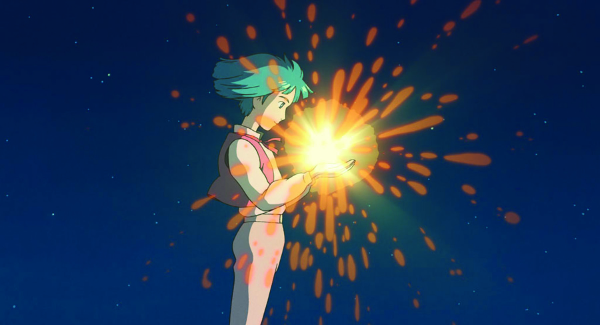
Howl's Moving Castle © 2004 Studio Ghibli. All Rights Reserved.
Can I let my kids watch anime?
As noted above, in the Western animation industry, Winnie the Pooh is a wholesome animated story for kids, while adult shows like South Park are not. In the same way, different anime target different age groups. Some anime are created for children and some are not.
In the West, not all kid's shows are ones that parents may approve of for their children. Kid’s movies or shows may have messages that parents would prefer not to include in their child’s upbringing, or the show may be wholesome but visually overstimulating to their child. It is the responsibility of parents to research and monitor any media that is forming their child.
The same holds true for anime created for children. Some may be the most delightful thing a parent has ever seen, and some may have certain aspects that parents would not want to include in their children’s upbringing.
Just as with Western media, it’s important to research an anime before letting a child watch it. Ask: Is it intended for children? Is it something the parent feels comfortable and happy sharing with their children? Is it a movie/show my kids enjoy?
If your kids are old enough, it is also good to have conversations with them about what they are watching. These discussions are a great way to get to know your kids on a deeper level – what resonated with them, what do they find funny or sad, who do they aspire to be like, etc. It can also be a wonderful opportunity to teach them to be aware of the messages they are taking in through their media, and to impart the tools they will need to discern their media choices in the light of Christ.

Mirai © 2018, Studio Chizu. All Rights Reserved.
If I want to begin watching anime, where should I start?
Anime presents an enormous range of storytelling, styles, genres, tropes, and pacing! Depending on your tastes and preferences, there could be many great places to start. However, if you are looking for a gentle entry point where the story is easy to understand and you can be confident of the content being true, good, and beautiful, here are some recommendations for safe and inspiring stories we love!
For kids/ the whole family: Ponyo
From the famous Studio Ghibli, a charming, imaginative tale that is reminiscent of “The Little Mermaid.” For a prayerful reflection on the film for the whole family, check out this article.
For teens: Whisper of the Heart
From the famous Studio Ghibli, a slice-of-life film about a teen trying to figure out her dream. For a prayerful reflection on the film, check out this article.
Young Adults +: A Silent Voice
From Kyoto Animation, a raw, real, and hauntingly beautiful exploration of bullying, atonement, and forgiveness.
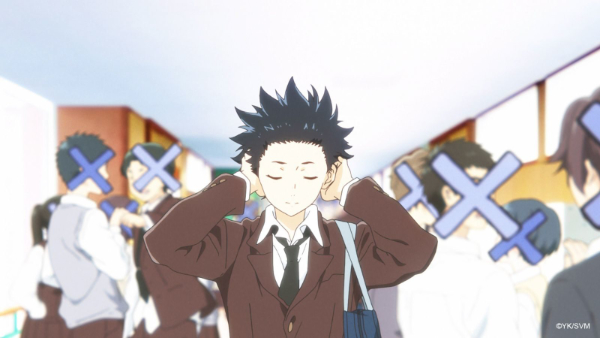
A Silent Voice © 2016 Kyoto Animation. All Rights Reserved.
How can I invite Jesus into my viewing experience?
Whether you are watching anime or any other type of visual media, here are four grounding principles to keep Christ at the center of your experience.
-
Discern the media you consume. Ask: Is this helping me be more attuned to Christ or separating me from him?
-
Look for Christian truths present in stories and be attentive to what is not consistent with Christ’s message. A solid grounding in personal prayer, Scripture, and Church teaching helps to do this effectively.
-
Intercede for writers, artists, actors, etc. Every person behind what you watch has a story. Pray for them as they create content: for their personal lives and for the messages they spread.
-
Pray with what you watch using Scripture. This can sometimes be called “Cinema Divina” - praying with the Word of God through film. You can find out more about how to allow what you watch to lead you back to prayer here.

Photo by Aaron Burden on Unsplash.
For further reading:
Available articles from Sr Orianne Pietra René and Sr Allison Regina exploring particular anime:
Spy x Family: Why Everyone is Rooting for Them
The Hidden Power of Mercy in Suzume and The Lord of the Rings
One Piece: Realizing Belonging
Your Name and the Hidden Truth Behind Yours
Five classic classic Studio Ghibli films
Fullmetal Alchemist and Being Human